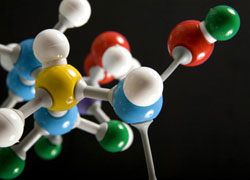Chemical models predict toxicity
Prediction of chemical toxicity on entry to the food chain is of prime importance in conservation and in the prevention of a threat to human health. The aim of the European project EASYRING was to improve information regarding the environmental levels of pollutants and their biological effects on aquatic species and consequent risks for mammalian systems. Toxicity tests have traditionally been based on in vivo trials but there is pressure to limit testing on animals from an economic and ethical point of view. This provided the impetus for the project team at Liverpool John Moores University to predict biological activity from the molecular structure of the pollutant. Methods of this nature are collectively known as quantitative structure activity relationships (QSARs). Increasingly, they are regarded as a realistic option for setting risk assessment levels of molecules toxic to biological systems. The group of chemicals known as oestrogen mimics were the target for study. These oestrogenic molecules include natural and synthetic hormones, pesticides and phthalates from the plastics industry, to name but a few. They have been implicated in low sperm counts in animals and humans and in cancers of the reproductive system. The team facilitated the prediction as regards toxicity by eliminating candidate molecules that would not have an oestrogenic effect. Firstly they applied rejection filters in the form of molecular features. The presence of a ring motif and molecular weight range were found to be the most significant criteria. The second strand of the rationalisation took into account the binding affinity of the potential toxins and an accurate RBA (receptor binding affinity) value was determined for each molecule. Other measures the team took into account were the variability of the living organisms potentially affected. A comparative molecular field analysis (CoMFA) supported by a SAR, or structure-activity relationship analysis was conducted. The team also identified a number of structural sites that were important for binding and performed quantitative activity-activity relationships (QAARs) to compare biological assays. European industry groups have agreed to support alternatives to animal experimentation and the EC is actively investing millions of euros to support this drive. These results may well represent a valuable contribution in the move to eradicate the needless involvement of animal testing that may be inhumane, costly and time-consuming.



